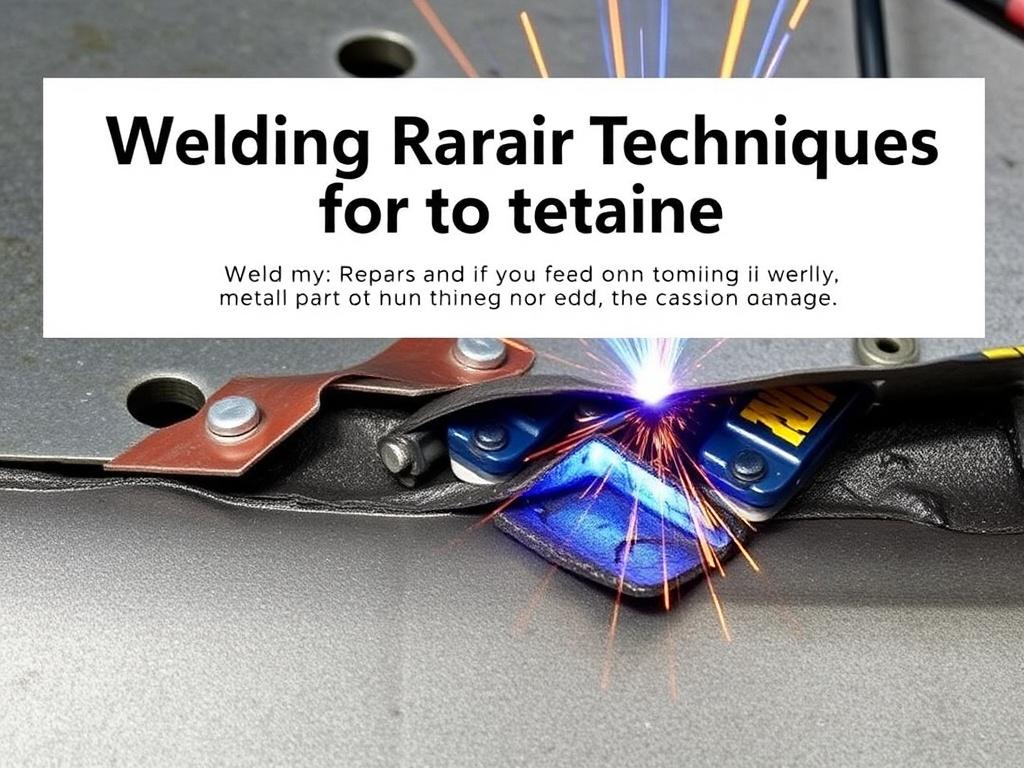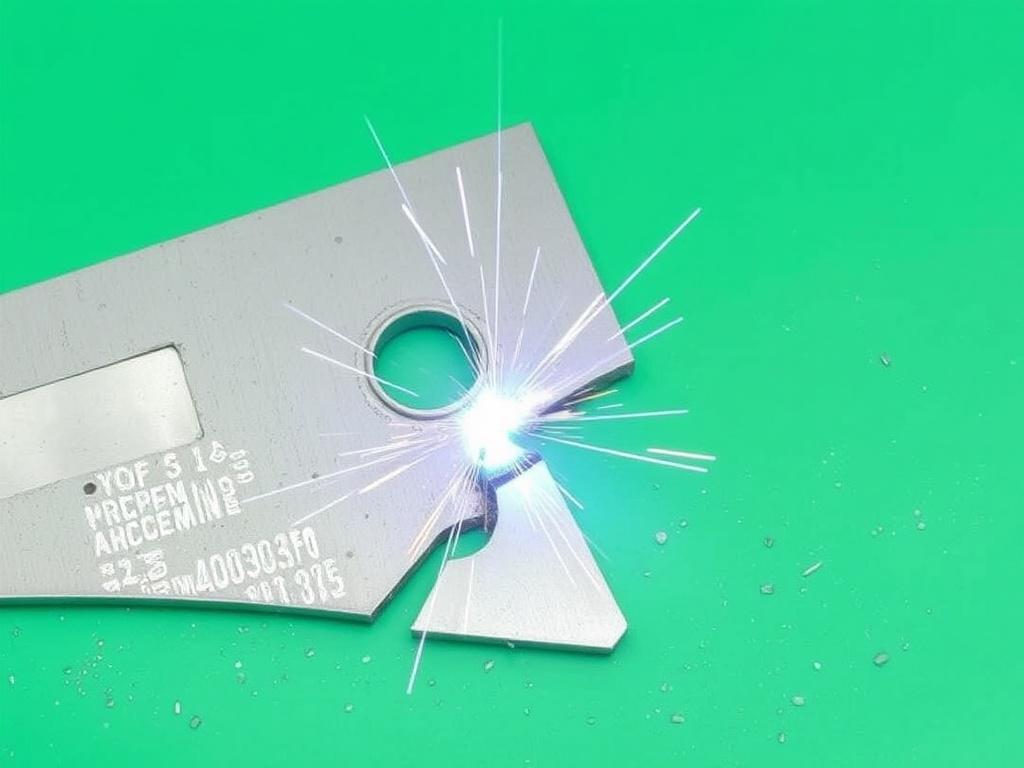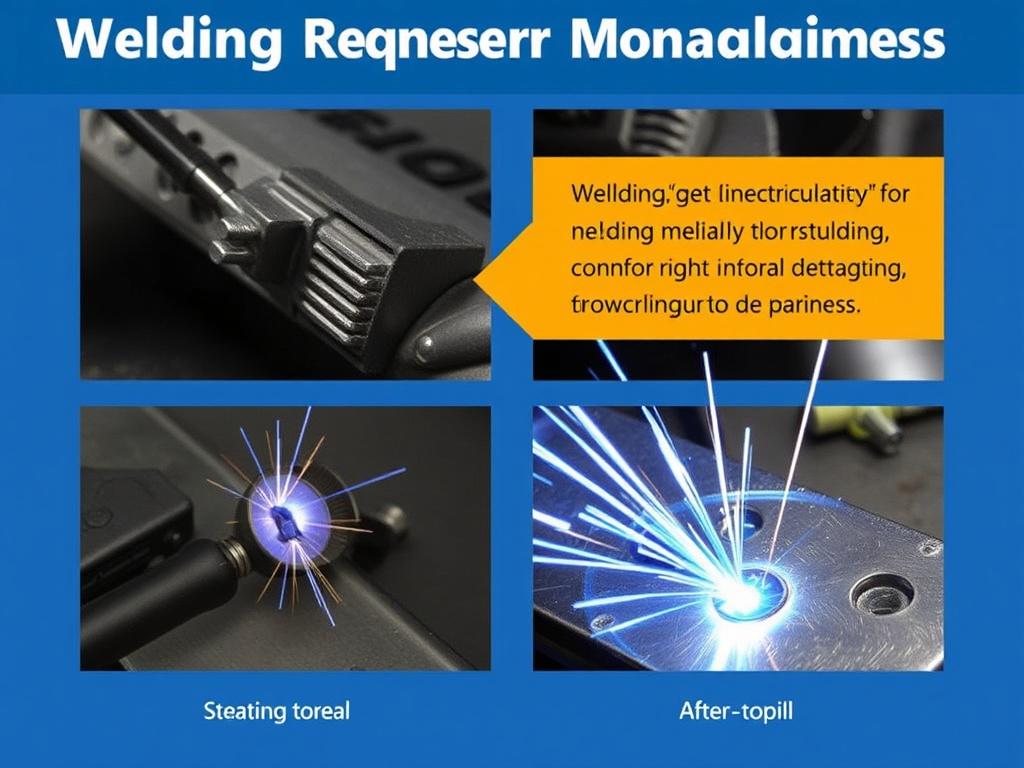
When it comes to maintaining and repairing metal parts, welding repair techniques play an essential role. Whether you’re dealing with cracked engine blocks, bent steel frames, or broken metal tools, understanding the basics of welding repairs can save you time, money, and frustration. In this article, we’ll dive deep into the world of welding repair techniques for damaged metal parts, exploring methods, tools, precautions, and best practices to help you perform effective, long-lasting repairs.
Whether you’re a DIY enthusiast, a professional fabricator, or someone curious about metal repairs, this detailed guide will walk you through everything you need to know to get started and improve your skillset.
Understanding Metal Damage: The First Step in Welding Repair

Before jumping into the welding process, it’s crucial to understand the type of damage your metal parts have sustained. Metal can deform or fail due to various reasons such as fatigue, corrosion, impact, or heat. Each type of damage requires a specific approach when it comes to repair.
For example, a simple crack will require a different welding technique compared to a seriously warped or bent part. Understanding the damage helps you determine the appropriate welding method, filler materials, and preparation steps.
Common Types of Metal Damage
- Cracks: Usually caused by fatigue or stress concentration, cracks can spread and further weaken the metal.
- Corrosion: Rust or oxidation eats away the metal, often resulting in pitting or holes.
- Bends and warps: Mechanical forces can distort metal parts, requiring reshaping before or during welding repair.
- Holes and punctures: From impacts or corrosion, holes need to be carefully filled using welding repair techniques.
- Broken joints: Welded or riveted joints that fail may need rewelding or reinforcement.
Identifying the type of damage accurately will ensure your welding repair is effective and durable.
Essential Tools and Equipment for Welding Repairs
To perform reliable welding repairs on damaged metal parts, having the right tools and equipment is essential. The welding process requires precision, safety, and the proper setup to achieve high-quality results.
Here’s a breakdown of the most important equipment pieces you’ll need:
| Tool/Equipment | Purpose | Recommended Use |
|---|---|---|
| Welding machine (MIG, TIG, or Stick) | Main equipment to fuse metal parts | Select based on metal type and repair requirements |
| Protective gear (helmet, gloves, apron) | Ensures safety from sparks, UV radiation, and heat | Always wear for every welding repair job |
| Angle grinder | Used for cleaning, grinding, and preparing metal surfaces | Prepares damaged parts and post-welding cleaning |
| Clamps and fixtures | Holds metal parts steady during welding | Ensures proper alignment and weld quality |
| Wire brush | Removes rust, paint, and slag | Prepares surface for optimal weld bonding |
| Measuring tools (calipers, ruler, square) | Ensures accuracy in measurement and alignment | Essential for precise repairs and fit |
The Most Common Welding Repair Techniques

Over the years, welders have developed various techniques to handle different types of damaged metal parts. Understanding these will empower you to choose the best option for your specific repair job.
1. MIG Welding (Metal Inert Gas Welding)
MIG welding is widely popular because it’s relatively easy to learn and works well on many metals. Using a continuous wire electrode fed through a welding gun, MIG welding melts and joins metals with the help of shielding gas that protects the weld pool from contamination.
This technique is perfect for repairing thin to medium-thickness metal parts like steel sheet metal or automotive panels. Its speed makes it efficient for production or quick repairs.
2. TIG Welding (Tungsten Inert Gas Welding)
TIG welding offers superior precision and control, especially useful for welding thin metals or intricate parts. It uses a non-consumable tungsten electrode and a separate filler metal. The shielding gas (usually argon) prevents oxidation.
While TIG welding requires more skill and time, the high-quality, clean welds are ideal for visible parts or those where strength is critical.
3. Stick Welding (Shielded Metal Arc Welding – SMAW)
Stick welding is a versatile and robust process, perfect for outdoor or dirty conditions where shielding gas is impractical. It uses a flux-coated electrode that creates its own protective gas during welding.
This method is often used for thicker metals, structural repairs, and fieldwork. While it can leave more slag and requires cleanup, stick welding is favored for its portability and strong joints.
4. Spot Welding
Spot welding is a resistance welding technique used primarily to join sheet metal parts by applying pressure and electric current to localized spots. Though it isn’t a typical “welding repair” technique for cracks or breaks, it is valuable in automotive repair and metal fabrication.
Preparing Metal Parts for Welding Repairs
Preparation is one of the most critical stages in welding repair. Cleaning, fitting, and preheating properly can significantly influence the quality and durability of your repair weld.
Cleaning the Metal Surface
Rust, oil, paint, dirt, and old slag must be removed from the damaged area. Even small contaminants can cause porosity, weak welds, or defects. Tools like angle grinders, wire brushes, and solvents are commonly used for surface preparation.
Fitting and Clamping
If you’re welding a broken or warped metal part, it’s essential to bring the pieces into correct alignment before welding. Clamps and fixtures hold the pieces steadily, preventing movement that could cause misaligned or weak welds.
Preheating
Some metals, especially cast iron or thick steel, require preheating to reduce thermal shock and prevent cracking. Preheating temperatures vary with metal type but commonly range between 250–500°F.
Step-by-Step Welding Repair Process

Let’s walk through a typical welding repair procedure, which you can adapt based on your specific project.
- Inspect the Damage: Assess cracks, holes, or other defects to determine the repair method.
- Prepare the Area: Clean and grind the damaged area to bare metal.
- Set Up Equipment: Choose the welding process (MIG, TIG, or Stick) and set appropriate parameters such as current and voltage.
- Fit and Clamp Parts: Align damaged sections and secure with clamps.
- Preheat Metal if Necessary: Use a torch to evenly preheat thicker metals.
- Weld the Repair: Apply multiple passes if required, with controlled heat input for good fusion.
- Cool Down Gradually: Avoid rapid cooling to reduce stress and cracks.
- Clean the Weld: Remove slag or spatter using a wire brush or grinder.
- Inspect and Test: Check for gaps, cracks, or weak spots; perform non-destructive testing if needed.
Common Challenges and How to Overcome Them
Even with careful preparation, welders often encounter problems during repairs. Here are some common issues and tips to address them.
Cracking and Porosity
Cracks in the weld or surrounding metal often occur due to rapid cooling or improper welding parameters. Porosity, characterized by holes or bubbles in the weld, is usually caused by contamination or poor shielding gas coverage.
To reduce these problems, ensure thorough cleaning, proper preheating, and correct settings on your welder. Also, maintain a steady hand and consistent speed during welding.
Warping and Distortion
Heat from welding causes metal expansion, which can lead to warping. To minimize distortion, use smaller, controlled weld beads and weld on alternate sides when possible to balance the stresses.
Lack of Fusion
Lack of fusion occurs when the weld metal doesn’t bond properly with the base metal, resulting in weak joints. This problem arises from incorrect welding parameters, incorrect technique, or contamination.
Check your welder settings, clean the surfaces thoroughly, and ensure a correct angle and travel speed during welding to promote fusion.
Specialized Welding Repair Techniques for Different Metals
Different metals require specialized repair approaches due to their composition, melting points, and thermal properties. Let’s explore some common metals and their repair nuances.
Steel
Steel is the most commonly welded metal and responds well to MIG, TIG, and stick welding. Mild steel is forgiving and cost-effective for repairs, while stainless steel requires shielding gases like argon and often TIG welding for best results.
Aluminum
Aluminum demands careful control due to its high thermal conductivity and oxide layer. TIG welding is preferred for thin parts, while MIG can be used for thicker repairs. Cleaning oxide layers with a stainless-steel wire brush before welding is essential.
Cast Iron
Cast iron has a high carbon content and is prone to cracking if not handled properly. Preheating, low heat input, and specialized electrodes are critical. Stick welding with nickel rods is a common repair method.
Copper and Brass
These metals have high thermal conductivity like aluminum. TIG welding is the best option, with slower travel speeds and sometimes preheating required to prevent cracks.
Maintenance Tips After Welding Repairs
Once the repair is complete, proper maintenance will extend the life of the welded metal parts and prevent future issues.
- Regular Inspections: Check for signs of re-cracking or corrosion around the weld.
- Protective Coatings: Apply paint, galvanizing, or powder coatings to prevent rust.
- Proper Usage: Avoid overloading or exposing the repaired parts to extreme conditions if possible.
- Routine Cleaning: Keep the metal surface free from dirt and moisture.
Safety Precautions While Performing Welding Repairs
Welding can be hazardous without proper safety protocols. Always follow these guidelines to protect yourself and others around you during welding repairs:
- Wear a welding helmet with a suitable shade to protect your eyes from UV radiation.
- Use flame-resistant gloves, aprons, and long sleeves to guard against sparks and burns.
- Work in a well-ventilated area to avoid inhaling harmful fumes and gases.
- Keep flammable materials away from the welding zone.
- Have a fire extinguisher nearby in case of emergencies.
- Ensure your welding machine is properly grounded.
Frequently Asked Questions About Welding Repair Techniques
Can all metal parts be repaired with welding?
Not all metal parts are suitable for welding repair. Some metals like certain cast irons or zinc-coated metals require specific techniques or may not be repairable if the damage is too severe.
Is welding repair cheaper than replacing the metal part?
Often yes, especially if the metal part is difficult to replace or expensive. Welding repairs, when done correctly, restore parts to full strength and can be very cost-effective.
How do I know which welding technique to use?
The best welding technique depends on the metal type, thickness, damage extent, and your skill level. MIG is great for beginners and general use; TIG offers precision, and stick welding is good for outdoor or thicker repairs.
Conclusion: Mastering Welding Repair Techniques for Durability and Success
Welding repair techniques for damaged metal parts open a world of possibilities, whether you’re restoring old equipment, fixing safety-critical components, or working on creative projects. Understanding the types of metal damage, preparing your work area meticulously, selecting the appropriate welding process, and following safety protocols will set you on the path to successful repairs.
Remember, practice is key — the more you weld, the better you become at controlling heat, mastering bead formation, and preventing common defects. So gather your tools, review your damage carefully, and get ready to breathe new life into those metal parts.
With this comprehensive guide in hand, you’re now well-equipped to tackle your next welding repair challenge with confidence and skill.
